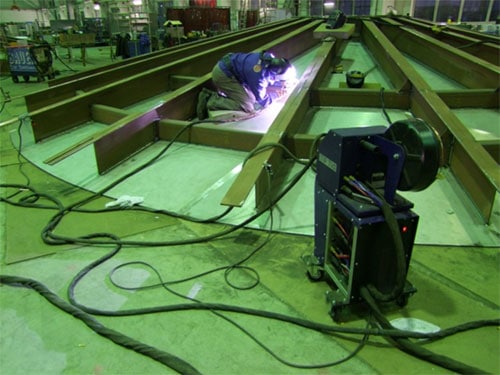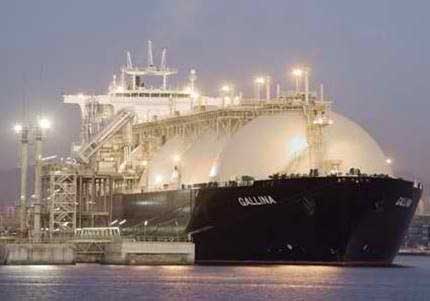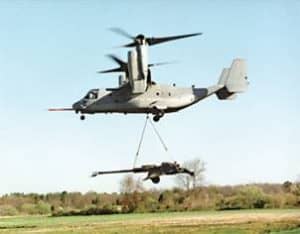TIP TIG Duplex On Large Applications
TIP TIG WELD FACT: TIP TIG CAN BE UTILIZED ON APPLICATIONS IN WHICH MIG AND FLUX CORED ARE USED. These ships’s large Duplex tanks will transport beverage and are similar to the all position weld fabrications common in any structural steel or ship yard. As the 6 to 10 mm Duplex tanks will contain beverage, so apart from structural AWS weld requirements, there was also the weld and part cleanliness standards necessary for vessels that transport beverage. Note how the health conscious German company had purchased costly fresh air weld shields to deal with the HEX CHROME concerns from flux cored and pulsed MIG duplex weld fumes that they used to get. The weld fumes not only contain Hex chrome concerns but were also influenced by the protective coating on the duplex surface. Note that after they changed to TIP TIG, the German welders still wore the air replacement weld shields even tho the TIP TIG fumes arewere hardly visible.

TIP TIG WELD FACT: PULSED MIG AND FLUX CORED CAN NEVER PROVIDE CLEANER WELDS WITH HIGHER WELD ENERGY AND LOWER WELDED PART HEAT INPUT THAN ATTAINED WITH TIP TIG. The Duplex, steels and Stainless all position steel welds produced by this company used to be welded with Pulsed MIG and Gas Shielded Flux Cored. Ferrite control, weld fusion, trapped slag, porosity was a quality issue with the vertical up / overhead welds, as was spatter, distortion, and costly rework. The chrome fumes from the duplex and stainless were a major daily problem not only for the welders but also the other plant employees. In 2008, it took this German company a few hours to figure out it would immediately switch to the TIP TIG process. This ship size application shows the reader how cost effective the TIP TIG process can be and how it quickly it resolved all the the weld issues that were daily generated by Pulsed MIG and Flux Cored
TIP TIG Pipe Welds & Clad Welds
- Same weld requirements for steels, stainless or Inconel :
- Watch TIP TIG with Pipe ID / OD Clad welds:
If you are a weld person that’s done cladding, you likely know the challenge of producing multi-layer clad welds, without stopping and without inter-pass temp on the end of a pipe a location in which there is no place for the weld heat to go. TIP TIG provides unique attributes for cladding as it provides the highest possible weld energy in an inert atmosphere and the lowest possible welded part heat providing the best weld fusion, lowest weld porosity and greatest control of weld dilution. What takes two or three weld layers to get chrome content would likely take TIP TIG one.
- Difficulty X-Ray Joints. Goal, no weld rework.
- 5G heavy wall Joints are common.
Most welds like this would be likely be made with a DC TIG root and the gas shielded flux cored or pulsed MIG process for the fill passes. Welders would be aware that even with their skills, that the X-Rays would likely reveal weld defects. Also what welders working so close to one another would want to deal with the weld spatter and especially with the Chrome Hex fumes generated from 2 welders. Like many, it took this company ten years, but they finally found TIP TIG. No fume concerns, no spatter, no weld rework. one procedure, two settings, one power source, one wire and gas
TIP TIG Carbon Pipe & Weld Attributes for all Welds
A weld fluidity / purity and low part heat not possible with any other manual weld process
- Dont try to duplicate these weld attributes from your pulsed MIG welds.
- Vertical up, Vertical Down or any weld position :
Way back in the 20th Century or in most Global Weld Shops you will find weld shops trying to CONSISTENTLY attin uniform all positio weld quality that will not create weld rework. It may have take SpaceX ten years, but they one day woke up to TIP TIG. And for those of you that resist weld change, and still using GTAW – flux cored OR Pulsed MIG don’t forget to take another TUM.
Why would any weld shop want to eliminate weld rework and make code quality pipe welds a simple task
- Steel
- Any Pipe, any position,
Put the music on, relax, rest one arm on the pipe and with one hand, no foot control, no spatter, no fumes, no weld cleaning, no grinding, no weld rework, using one weld process, one wire one gas and requiring only one weld procedure, and for all you high tech defense, aerospace, power and oil companies, and its been this way since 2009. Yawn.
TIP TIG 9% Nickel and Stainless Steels

Its 2020, and I have been amazed over the last decade to watch the Oil / LNG major corporations utilize 20th Century weld processes such as TIG – Pulsed MIG and flux cored to weld the Nickel, Stainless and Inconel welds on their LNG infrastructures and LNG carrier tankers. I know the answer to this, but I will ask the question anyway. Why would any “experienced” rational engineer or manager allow on the sluggish alloys the following. [a] Pulsed MIG with the lack of weld fusion, porosity, distortion large weld HAZ, plus weld Chrome fume concerns. [b] DC TIG, with its high weld heat, high skill requirements and ridiculous low deposition rates. [c] Or gas shielded flux cored welds that will have fusion, porosity, slag, weld cracking and over the top weld fume concerns? Of course mechanical and corrosion properties will be of great concern with many of the weld LNG applications, yet the TIG – MIG Flux Cored weld processes selected will in contrast to TIP TIG will typically put in 50 – 60% more weld heat into the parts.
A reminder of what TIP TIG will do for those companies that don’t have Rip Van Winkle running the engineering department.
[1] TIP TIG providing the highest weld energy deals with slushiness alloys and lack of fusion concerns.
[2] TIP TIG high energy welds are in an inert atmosphere providing the cleanest welds.
[3] TIP TIG providing the lowest welded part heat input enables the best possible mechanical and corrosion properties.
[4] TIP TIG provides the lowest possible weld fumes which when welding LNG applications has to be a major concern.
[5] TIP TIG the easiest process to use for all position welds.
[6] TIP TIG one process – one procedure – one wire – one gas.
[7] Take a look at the above LNG carrier, and keep this in mind, with TIP TIG the welder will likely only require two weld setting to produce all the welds on the ship, welds that should not require weld rework.
TIP TIG Heat Exchange Welds No longer Need Automated Weld Equip.
When the weld shop had to do these common industry heat exchange welds, the choice was slow manual TIG or pulsed MIG, often resulting in lack of fusion or poor weld tie-ins. Or in most cases an automated TIG unit would be provided. Along came TIP TIG which is so easy to use the weld shop could forget the automation and do the welds with manual TIP TIG. As TIP TIG puts in much higher deposition rates than TIG, the weld shop will find if they are using two or three welds layers with TIG, they likely will do the weld with one TIP TIG pass. If only one automated weld pass, is used the weld shop could TIP TIG manually weld the tubes at about thirty percent of the time required with TIG.
TIP TIG Titanium Welds Without Gas Trail Shield
For 10 Years, the North American Weld industry has not been aware that you can weld Titanium welds without a Gas Trailing Shield

The task for Tom and I in 2009 when we first started TIP TIG, was to see if we could weld titanium without evidence of oxidation. The grade 2 Titanium parts we were provided were dirty (reason for smoke), that did not bother me as I just wanted to prove that TIP TIG puts in so little weld heat into parts that the weld would stay silver without a gas trailing shield. Note the weld speed with EN polarity. TIP TIG was available to defense contractors at a time when US Army titanium Howitzers were welded by defense contractors who for years struggled at great cost with the above and other Titanium applications. The defense industry is notorious for its lack of management / engineering weld process ownership and its ability to accept progressive cost effective welds changes.
ARMY – NAVY – AIR FORCE AND DEFENSE CONTRACTORS TAKE NOTE. For those of you involved with Titanium welds, and payed the price for weld quality issues, weld rework, rejects and production issues, TIP TIG in 2020 has been available for ten years, The US Army titanium Howitzers above is a case in point, these guns were welded by defense contractors who for years struggled at great cost with what would have been a simple application with TIP TIG.
TIP TIG Stainless - Nickel - Inconel Weld Resolutions
A weld process that delivers weld resolutions
- Stainless - Inconel - Hastelloy - Duplex, or any metal
- TIP TIG from gauge to any thickness, from the smallest to the largest weld applications. One process, one wire and one gas for unlimited weld applications .
What weld shop has not welded a stainless part? This shop had very tight tolerances with the flange and distortion was a concern, As the part was to be used in a brewery, weld cleanliness, spatter and the cosmetic weld appearance was important to the customer.
Typically weld shops will use manual DC TIG for tacking and automated DC TIG welds for the stainless seams. For the flange welds Pulsed MIG for the fillet welds was utilized with mediocre weld results. Before TIP TIG this weld shop would every week spend many hours on distortion issues and weld cleaning and grinding. 35 years after the warnings on Hex Chrome Carcinogenic weld fumes with alloys that contain chrome, the weld shop management was starting to consider purchasing costly exhaust equipment. Then along came TIP TIG.
- No more fumes
- No more grinding
- No more spatter
- No more distortion,
- No more weld rework. The weld benefits come when weld shop engineers and managers take responsibility for weld process ownership
TIP TIG and Inconel Welds
Title of the Video
- Alloy :
- Application :
Lorem ipsum dolor sit amet, consectetur adipiscing elit. Ut elit tellus, luctus nec ullamcorper mattis, pulvinar dapibus leo. Lorem ipsum dolor sit amet, consectetur adipiscing elit. Ut elit tellus, luctus nec ullamcorper mattis, pulvinar dapibus leo.
TIP TIG and Stellite Welds
Title of the Video
- Alloy :
- Application :
Lorem ipsum dolor sit amet, consectetur adipiscing elit. Ut elit tellus, luctus nec ullamcorper mattis, pulvinar dapibus leo. Lorem ipsum dolor sit amet, consectetur adipiscing elit. Ut elit tellus, luctus nec ullamcorper mattis, pulvinar dapibus leo.